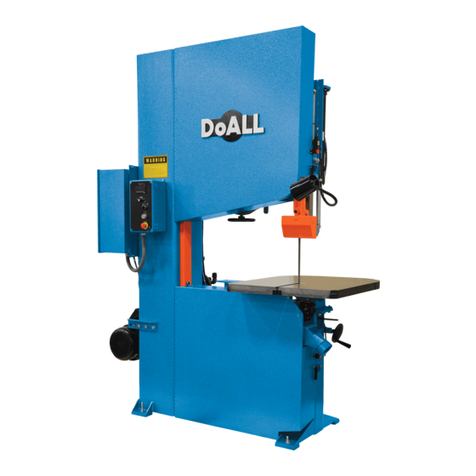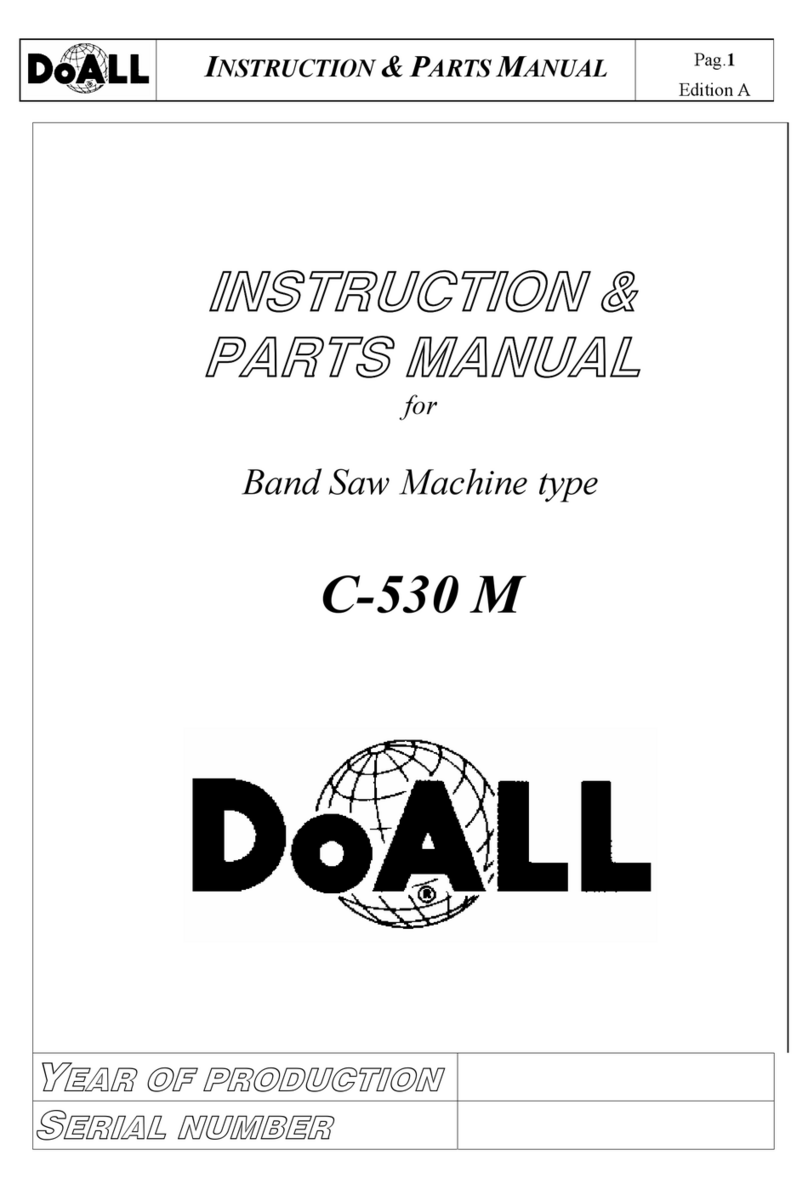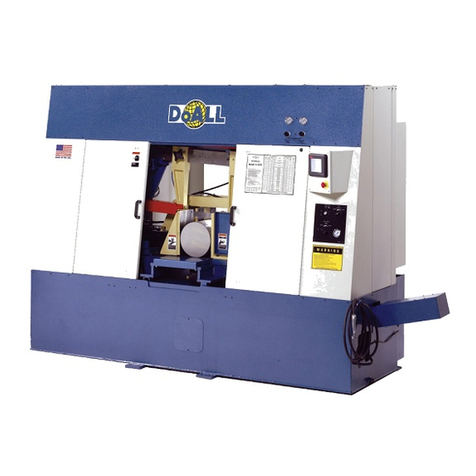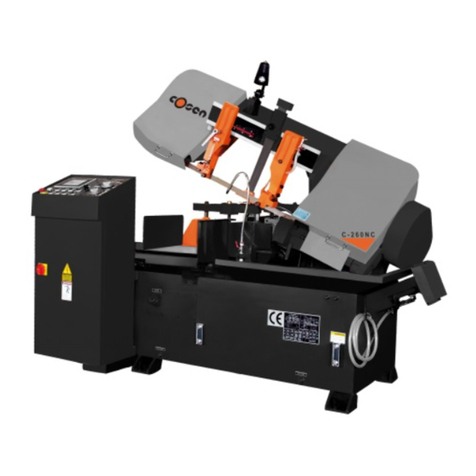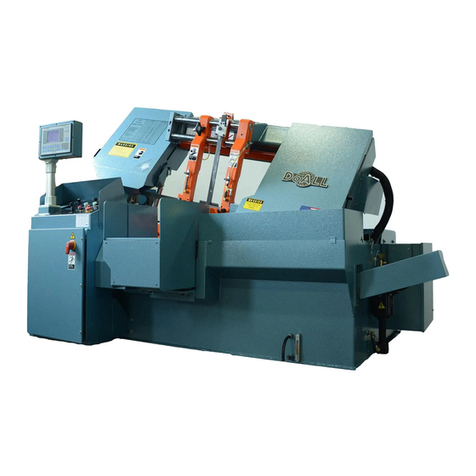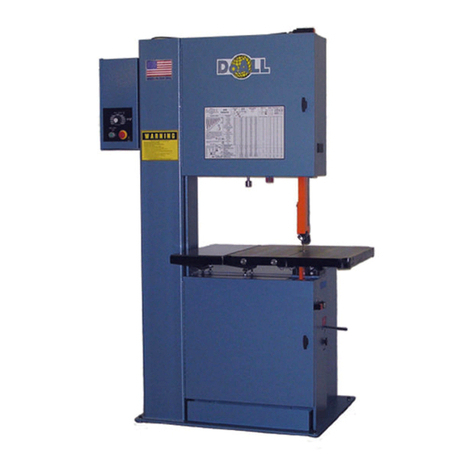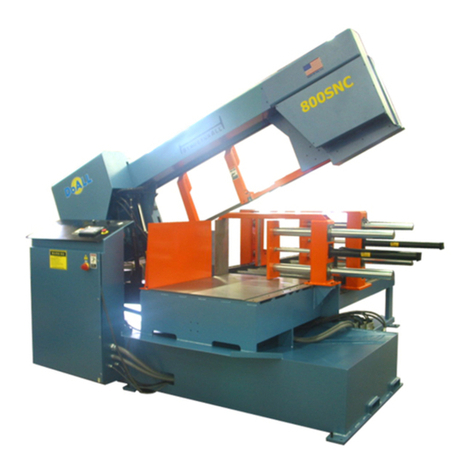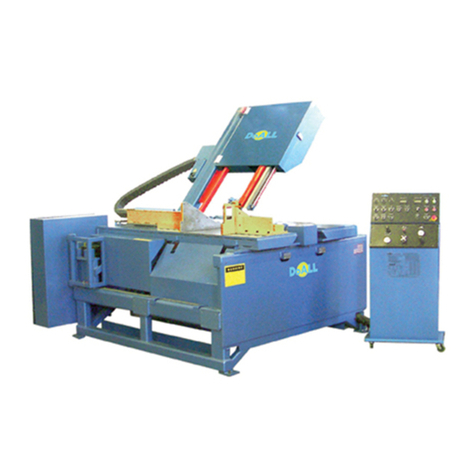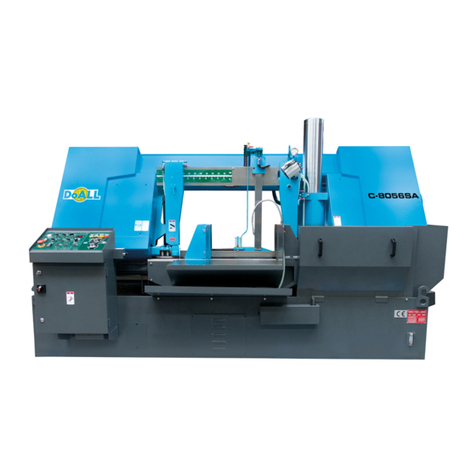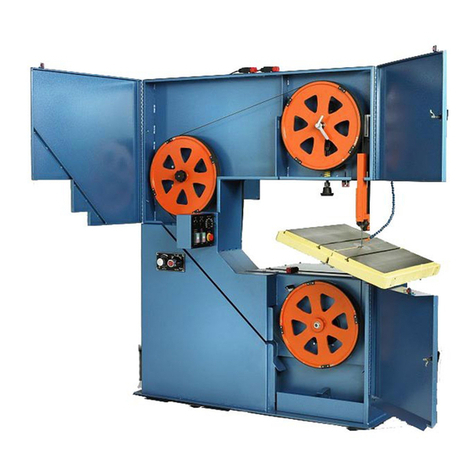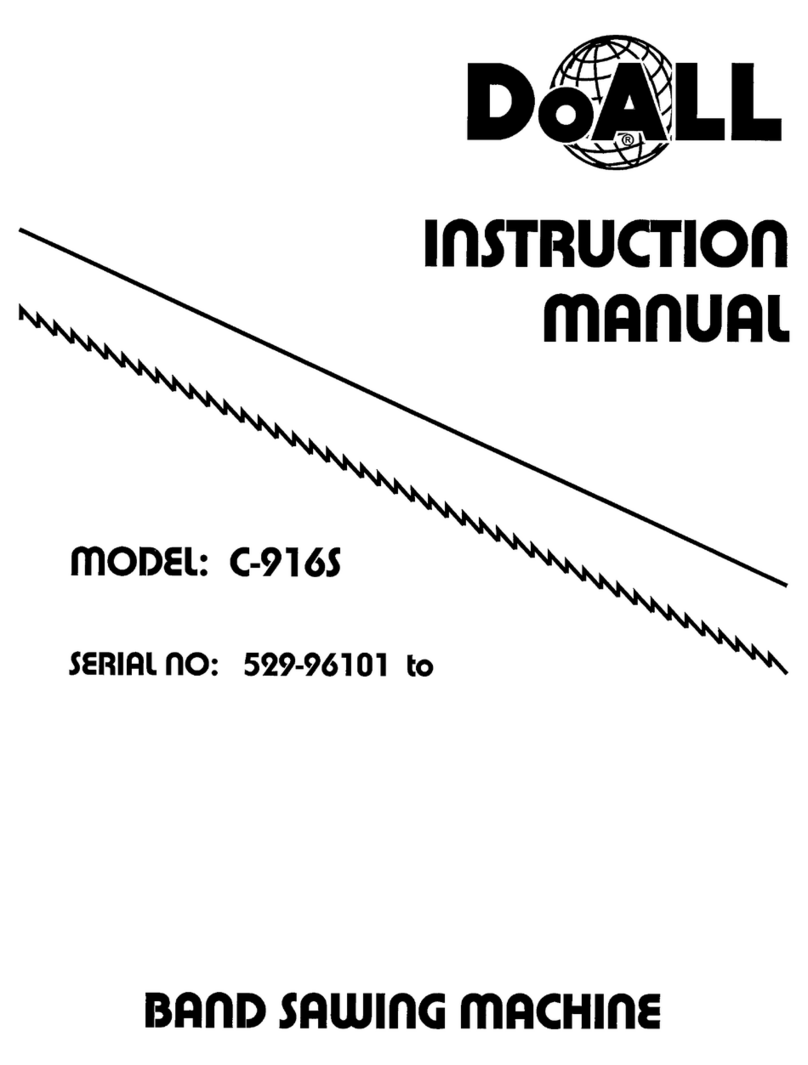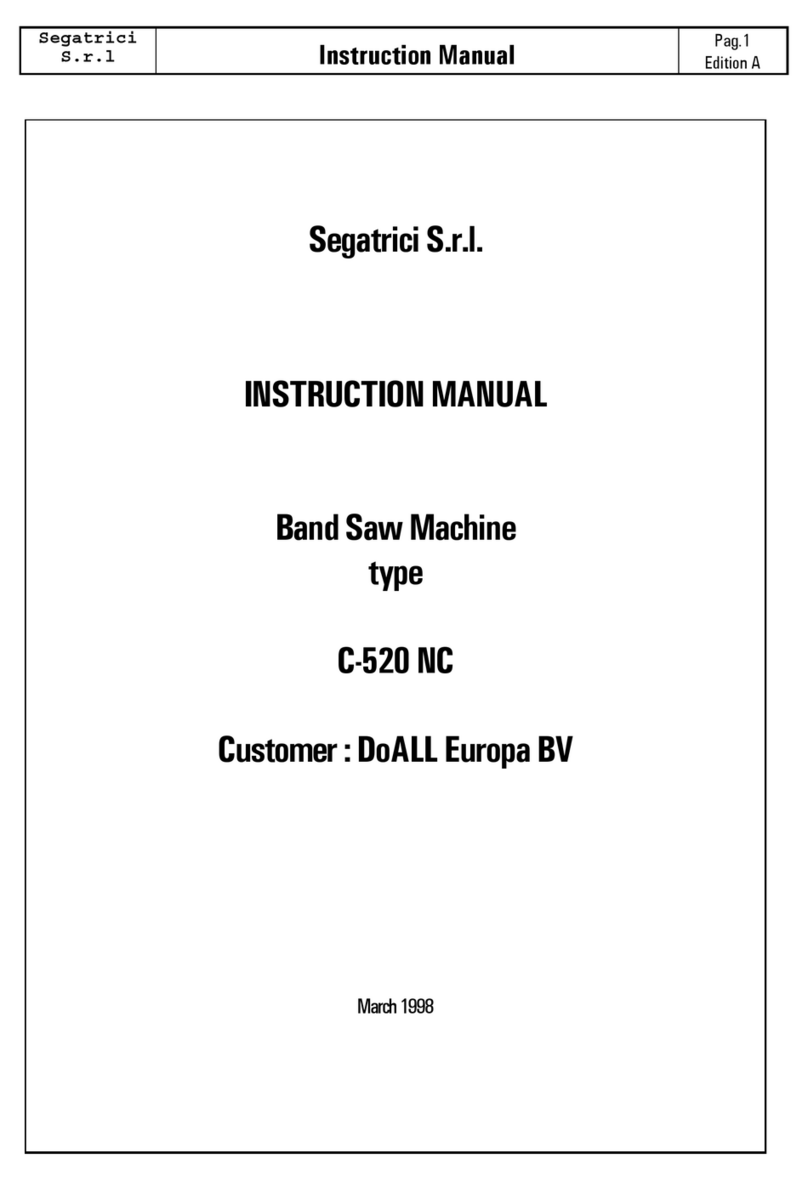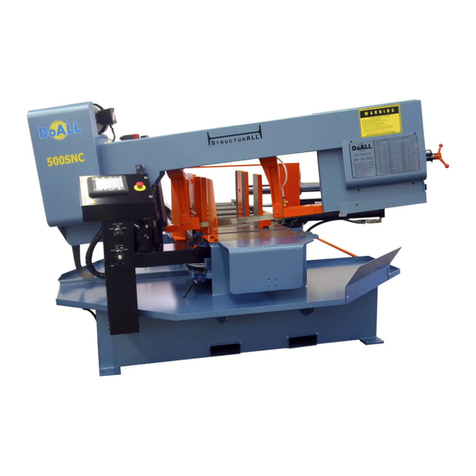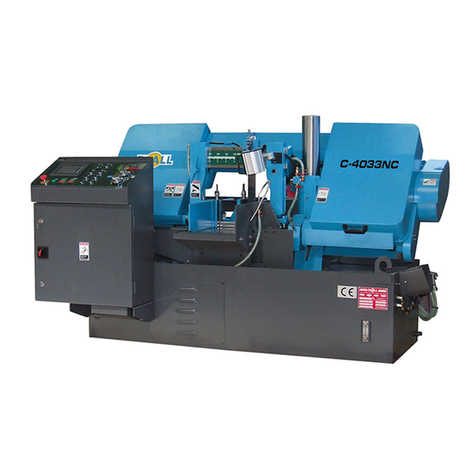
DS-320SA
Instruction Manual - 2 - www.doallsaws.com
1. CONTENT
1. CONTENT ...................................................................................................................................................... 2
2. INTRODUCTION ............................................................................................................................................ 4
2. DESCRIPTION OF THE MACHINE ............................................................................................................... 4
2.1 OPERATING CYCLE ............................................................................................................................... 4
2.2 CONTROL SYSTEM ................................................................................................................................ 4
2.3 CONSTRUCTION .................................................................................................................................... 5
2.4 STANDARD EQUIPMENT ....................................................................................................................... 5
2.5 BASIC EQUIPMENT OF MACHINE ........................................................................................................ 5
2.5.1 SET OF TOOLS FOR COMMON SERVICE ................................................................................ 6
2.6 PURPOSE OF THE MACHINE ................................................................................................................ 7
3. TECHNICAL DATA ........................................................................................................................................ 8
3.1 CUTTING PARAMETERS ....................................................................................................................... 8
3.2 DIMENSIONS FOR TRANSPORT .......................................................................................................... 8
3.3 INFORMATION ON DRIVE ...................................................................................................................... 9
3.4 THE AMOUNT OF SERVICE/OPERATING FLUIDS .............................................................................. 9
3.5 EMISSIONS – MACHINE NOISE LEVEL ................................................................................................ 9
3.6 PRODUCTION LABEL ........................................................................................................................... 10
4. MAIN PARTS AND FUNCTIONS ................................................................................................................ 11
4.1 VICE ....................................................................................................................................................... 12
4.2 ARM ....................................................................................................................................................... 13
4.3 HYDRAULIC UNIT ................................................................................................................................. 14
5. SAFETY RULES .......................................................................................................................................... 15
5.1 SAFETY DURING OPERATION ............................................................................................................ 15
5.2 LIST OF POSSIBLE DANGERS WHEN WORKING WITH MACHINE ................................................. 16
5.2.1 MECHANICAL RISK ................................................................................................................... 16
5.2.2 ELECTRICAL RISKS .................................................................................................................. 16
5.3 FIRE PROTECTION .............................................................................................................................. 16
5.4 ELECTRICAL EQUIPMENT................................................................................................................... 17
5.5 IT IS PROHIBITED TO ........................................................................................................................... 17
5.6 SAFETY REGULATIONS ...................................................................................................................... 18
5.6.1 SAFETY COMPONENTS ........................................................................................................... 19
5.7 DESCRIPTION OF LABELS .................................................................................................................. 20
6. INSTRUCTIONS FOR TRANSPORT .......................................................................................................... 22
7. DIRECTIVES FOR STORAGE .................................................................................................................... 22
8. MACHINE INSTALLATION ......................................................................................................................... 23
8.1 INSPECT MACHINE FOR SHIPPING DAMAGES ................................................................................ 23
8.2 SHIPPING BRACKETS .......................................................................................................................... 23
8.3 INSTALLING THE MACHINE ................................................................................................................ 23
8.3.1 FOUNDATION REQUIREMENTS .............................................................................................. 23
8.3.2 ACHORING INSTRUCTIONS: ................................................................................................... 24
8.4 INSTALLING THE ROLLER TABLE ...................................................................................................... 25
8.5 HOW TO ANCHOR MACHINE TO THE FLOOR .................................................................................. 26
8.6 CONNECTING TO THE ELECTRICAL NET ......................................................................................... 26
9. DESCRIPTION OF MAIN PANEL ............................................................................................................... 27
9.1 KEYPAD ................................................................................................................................................. 28
9.2 HMI PANEL ............................................................................................................................................ 29
9.2.1 STARTING SCREEN .................................................................................................................. 29
9.2.2 MENU ......................................................................................................................................... 30
9.2.3 NUMERIC KEYPAD ................................................................................................................... 30
9.3 /1.PAR/ USER PARAMETERS .............................................................................................................. 31
9.4 /2.MAN/ MANUAL SAW CONTROL ...................................................................................................... 33
9.5 PREPARATIONS BEFORE CUTTING .................................................................................................. 34
9.6 INITIATION OF THE MACHINE INTO THE STAND-BY MODE ........................................................... 35
9.7 ANGLE SETTING .................................................................................................................................. 36
9.7.1 CUTTING OF THE RIGHT ANGLE CUTS ................................................................................. 36
9.7.2 CUTTING OF THE LEFT ANGLE CUTS .................................................................................... 36
9.7.3 DIGITAL POINTER OF THE ANGLE (ACCESSORIES) ........................................................... 37
9.8 ADJUSTMENT OF THE WORKING POSITION .................................................................................... 38
9.8.1 ADJUSTMENT OF THE UPPER WORKING POSITION ........................................................... 38
